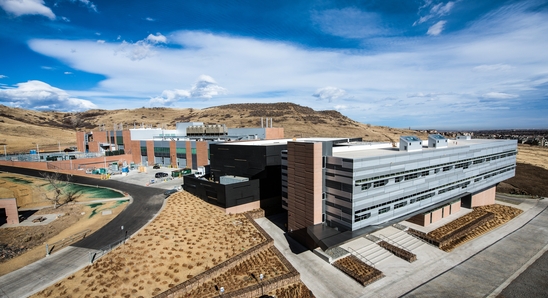|
Timothy Sands
Timothy D. Sands (born March 26, 1958) is an American materials engineer, researcher and the 16th president of Virginia Tech. Sands previously served as the acting president and as the provost of Purdue University. Education Sands earned his B.S. with Highest Honors in Engineering Physics in 1980, his M.S. in Material Science and Engineering in 1981, and his Ph.D. in Material Science and Engineering in 1984, all from the University of California, Berkeley. Current research Sands has published more than 260 papers and has 16 patents in nanotechnology and microelectronics. Sands' current research focus is on the development of novel nanocomposite materials for environmentally friendly and cost-effective solid-state lighting, direct conversion of heat to electrical power and thermoelectric refrigeration. Sands is considered a leader in the field of light-emitting diodes (LEDs). Career Sands began his career with an internship as a researcher at the Solar Energy Research Institute ... [...More Info...] [...Related Items...] OR: [Wikipedia] [Google] [Baidu] |
Charles Steger
Charles William Steger Jr. (June 16, 1947 – May 6, 2018) was an American architect and engineer who was the 15th president of Virginia Polytechnic Institute and State University (Virginia Tech) in Blacksburg, Virginia, United States. He graduated in 1969 from Virginia Tech, where he also received his master's in architecture and Ph.D. in Environmental Science and Engineering. Steger served at Virginia Tech at nearly every level possible. He was a Virginia Tech student, instructor (where he won two teaching excellence awards and co-authored a textbook now in its seventh edition), academic department head, college dean (the youngest dean of any college of architecture in the US), vice president, and finally president. In Steger's previous position as Vice President for Development and University Relations, he served as director of a six-year campaign which exceeded its $250 million goal raising $337.4 million with over 71,000 donors. On May 14, 2013, Steger announced that he ... [...More Info...] [...Related Items...] OR: [Wikipedia] [Google] [Baidu] |
Engineering Physics
Engineering physics, or engineering science, refers to the study of the combined disciplines of physics, mathematics, chemistry, biology, and engineering, particularly computer, nuclear, electrical, electronic, aerospace, materials or mechanical engineering. By focusing on the scientific method as a rigorous basis, it seeks ways to apply, design, and develop new solutions in engineering. Overview Unlike traditional engineering disciplines, engineering science/physics is not necessarily confined to a particular branch of science, engineering or physics. Instead, engineering science/physics is meant to provide a more thorough grounding in applied physics for a selected specialty such as optics, quantum physics, materials science, applied mechanics, electronics, nanotechnology, microfabrication, microelectronics, computing, photonics, mechanical engineering, electrical engineering, nuclear engineering, biophysics, control theory, aerodynamics, energy, solid-state physics, etc. It is ... [...More Info...] [...Related Items...] OR: [Wikipedia] [Google] [Baidu] |
West Lafayette, Indiana
West Lafayette () is a city in Wabash Township, Tippecanoe County, Indiana, United States, about northwest of the state capital of Indianapolis and southeast of Chicago. West Lafayette is directly across the Wabash River from its sister city, Lafayette. As of the 2020 census, its population was 44,595. It is the most densely populated city in Indiana and is home to Purdue University. History Augustus Wylie laid out a town in 1836 in the Wabash River floodplain south of the present Levee. Due to regular flooding of the site, Wylie's town was never built. The present city was formed in 1888 by the merger of the adjacent suburban towns of Chauncey, Oakwood, and Kingston, located on a bluff across the Wabash River from Lafayette, Indiana. The three towns had been small suburban villages which were directly adjacent to one another. Kingston was laid out in 1855 by Jesse B. Lutz. Chauncey was platted in 1860 by the Chauncey family of Philadelphia, wealthy land speculato ... [...More Info...] [...Related Items...] OR: [Wikipedia] [Google] [Baidu] |
Telcordia Technologies
iconectiv is a supplier of network planning and network management services to telecommunications providers. Known as Bellcore after its establishment in the United States in 1983 as part of the break-up of the Bell System, the company's name changed to Telcordia Technologies after a change of ownership in 1996. The business was acquired by Ericsson in 2012, then restructured and rebranded as iconectiv in 2013. A major architect of the United States telecommunications system, the company pioneered many services, including caller ID, call waiting, mobile number portability and toll-free telephone number (800) service. It also pioneered the prepaid charging system and the Intelligent Network. Headquartered in Bridgewater, New Jersey (U.S.), iconectiv provides network and operations management, numbering, registry and fraud prevention services for the global telecommunications industry. It provides numbering services in more than a dozen countries, including serving as the Lo ... [...More Info...] [...Related Items...] OR: [Wikipedia] [Google] [Baidu] |
Renewable Energy
Renewable energy is energy that is collected from renewable resources that are naturally replenished on a Orders of magnitude (time), human timescale. It includes sources such as Solar power, sunlight, wind power, wind, the movement of Hydropower, water, and geothermal energy, geothermal heat. Although most renewable energy sources are sustainable energy, sustainable, some are not. For example, some biomass sources are considered unsustainable at current rates of exploitation of natural resources, exploitation. Renewable energy often provides energy for electricity generation to a grid, space heating, air and water heating/air conditioning, cooling, and stand-alone power systems. Renewable energy technology projects are typically large-scale, but they are also suited to rural and remote areas and Renewable energy in developing countries, developing countries, where energy is often crucial in Human development (humanity), human development. Renewable energy is often deployed toge ... [...More Info...] [...Related Items...] OR: [Wikipedia] [Google] [Baidu] |
Golden, Colorado
Golden is a home rule city that is the county seat of Jefferson County, Colorado, United States. The city population was 20,399 at the 2020 United States Census. Golden lies along Clear Creek at the base of the Front Range of the Rocky Mountains. Founded during the Pike's Peak Gold Rush on June 16, 1859, the mining camp was originally named Golden City in honor of Thomas L. Golden. Golden City served as the capital of the provisional Territory of Jefferson from 1860 to 1861, and capital of the official Territory of Colorado from 1862 to 1867. In 1867, the territorial capital was moved about east to Denver City. Golden is now a part of the Denver–Aurora–Lakewood, CO Metropolitan Statistical Area and the Front Range Urban Corridor. The Colorado School of Mines, offering programs in engineering and science, is located in Golden. In addition, it is also home to the National Renewable Energy Laboratory, National Earthquake Information Center, Coors Brewing Company, CoorsTek, ... [...More Info...] [...Related Items...] OR: [Wikipedia] [Google] [Baidu] |
National Renewable Energy Laboratory
The National Renewable Energy Laboratory (NREL) in the US specializes in the research and development of renewable energy, energy efficiency, energy systems integration, and sustainable transportation. NREL is a federally funded research and development center sponsored by the Department of Energy and operated by the Alliance for Sustainable Energy, a joint venture between MRIGlobal and Battelle. Located in Golden, Colorado, NREL is home to the National Center for Photovoltaics, the National Bioenergy Center, and the National Wind Technology Center. History The Solar Energy Research, Development and Demonstration Act of 1974 established the Solar Energy Research Institute, which opened in 1977 and was operated by MRIGlobal. Under the Jimmy Carter administration, its activities went beyond research and development in solar energy as it tried to popularize knowledge about already existing technologies, like passive solar. During the Ronald Reagan administration the ins ... [...More Info...] [...Related Items...] OR: [Wikipedia] [Google] [Baidu] |
Solar Energy Research Institute
The National Renewable Energy Laboratory (NREL) in the US specializes in the research and development of renewable energy, energy efficiency, energy systems integration, and sustainable transportation. NREL is a federally funded research and development center sponsored by the Department of Energy and operated by the Alliance for Sustainable Energy, a joint venture between MRIGlobal and Battelle. Located in Golden, Colorado, NREL is home to the National Center for Photovoltaics, the National Bioenergy Center, and the National Wind Technology Center. History The Solar Energy Research, Development and Demonstration Act of 1974 established the Solar Energy Research Institute, which opened in 1977 and was operated by MRIGlobal. Under the Jimmy Carter administration, its activities went beyond research and development in solar energy as it tried to popularize knowledge about already existing technologies, like passive solar. During the Ronald Reagan administration the institut ... [...More Info...] [...Related Items...] OR: [Wikipedia] [Google] [Baidu] |
Light-emitting Diodes
A light-emitting diode (LED) is a semiconductor device that emits light when current flows through it. Electrons in the semiconductor recombine with electron holes, releasing energy in the form of photons. The color of the light (corresponding to the energy of the photons) is determined by the energy required for electrons to cross the band gap of the semiconductor. White light is obtained by using multiple semiconductors or a layer of light-emitting phosphor on the semiconductor device. Appearing as practical electronic components in 1962, the earliest LEDs emitted low-intensity infrared (IR) light. Infrared LEDs are used in remote-control circuits, such as those used with a wide variety of consumer electronics. The first visible-light LEDs were of low intensity and limited to red. Early LEDs were often used as indicator lamps, replacing small incandescent bulbs, and in seven-segment displays. Later developments produced LEDs available in visible, ultraviolet (UV) ... [...More Info...] [...Related Items...] OR: [Wikipedia] [Google] [Baidu] |
Thermoelectric
The thermoelectric effect is the direct conversion of temperature differences to electric voltage and vice versa via a thermocouple. A thermoelectric device creates a voltage when there is a different temperature on each side. Conversely, when a voltage is applied to it, heat is transferred from one side to the other, creating a temperature difference. At the atomic scale, an applied temperature gradient causes charge carriers in the material to diffuse from the hot side to the cold side. This effect can be used to generate electricity, measure temperature or change the temperature of objects. Because the direction of heating and cooling is affected by the applied voltage, thermoelectric devices can be used as temperature controllers. The term "thermoelectric effect" encompasses three separately identified effects: the Seebeck effect, Peltier effect, and Thomson effect. The Seebeck and Peltier effects are different manifestations of the same physical process; textbooks may re ... [...More Info...] [...Related Items...] OR: [Wikipedia] [Google] [Baidu] |
Nanocomposite
Nanocomposite is a multiphase solid material where one of the phases has one, two or three dimensions of less than 100 nanometers (nm) or structures having nano-scale repeat distances between the different phases that make up the material. The idea behind Nanocomposite is to use building blocks with dimensions in nanometre range to design and create new materials with unprecedented flexibility and improvement in their physical properties. In the broadest sense this definition can include porous media, colloids, gels and copolymers, but is more usually taken to mean the solid combination of a bulk matrix and nano-dimensional phase(s) differing in properties due to dissimilarities in structure and chemistry. The mechanical, electrical, thermal, optical, electrochemical, catalytic properties of the nanocomposite will differ markedly from that of the component materials. Size limits for these effects have been proposed: in Kelly, A, ''Concise encyclopedia of composites materials' ... [...More Info...] [...Related Items...] OR: [Wikipedia] [Google] [Baidu] |



